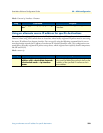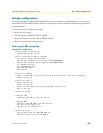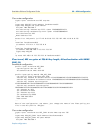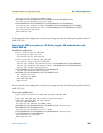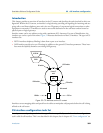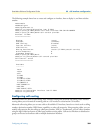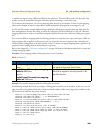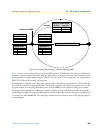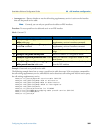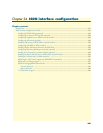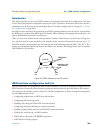
Configuring call routing 384
SmartWare Software Configuration Guide 33 • CS interface configuration
The following example shows how to create and configure an interface, how to display it, and how to delete
another.
node>enable
node#configure
node(cfg)#context cs
node(ctx-cs)[switch]#interface isdn IF-PBX1
node(if-pstn)[IF-PBX1]#route call dest-interface TAB-CALLED-NUMBER
node(if-pstn)[IF-PBX1]#show call-control provider
Provider: IF-PBX1
=================
Binding: (none)
Protocol: (unknown)
DTMF Dialing: disabled
Tone-Set Profile: (none)
PSTN Profile: default
Routing Destination: router (IF-PBX1-precall-service)
Active Endpoints: 0
Suspended endpoints: 0
node(if-pstn)[IF-PBX1]#exit
node(ctx-cs)[switch]#show call-control provider
Call Control: switch
====================
Providers
---------
local
router
sn43
IF-PBX1
IF-PBX2
IF-PUBLIC-PSTN1
IF-PUBLIC-PSTN2
IF-COMPOFF-A
HUNT-COMPOFF-A
HUNT-PBX
HUNT-PUBLIC-PSTN
node(ctx-cs)[switch]#no interface isdn IF-PBX1
node(ctx-cs)[switch]#
Configuring call routing
SmartWare offers two levels of call routing: basic interface routing and advanced call routing. Basic interface
routing allows you to forward all incoming calls on a CS interface to a destination CS interface.
Advanced call routing allows you to route calls to all available CS interfaces, based on a criteria such as calling
number, destination number, ISDN bearer capability, or other call properties. Using mapping tables, you can
modify call properties like the calling or called party number, URI, etc. Furthermore, you can collect numbers
using the digit-collection feature of called party number routing tables. Call services like hunt or distribution
groups can be used to distribute calls to multiple destination interfaces.



